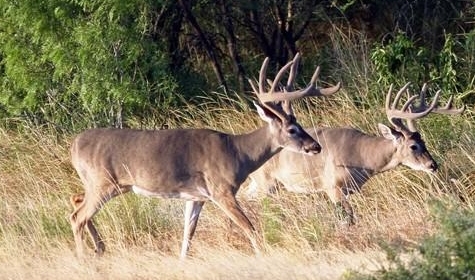It goes without saying that white-tailed deer hunters love to see deer when they head out into the woods. But when it comes to deer management and the ability to grow bigger bucks, numbers can work against you and the habitat that your property provides. Deer foods, after all, are in limited supply. There may be times when the food supply far exceeds the demand of hungry deer, but then there are the stress periods where demand exceeds the available food supply.
Few hunters really think about deer being hungry, other than the ones that show up at the feeders or food plots. Research has shown that a gap of just two to three months during the winter period, when deer are having to consume suboptimal food, can have as much as a 20% impact on the size of the antlers those bucks will grow the following year. In short, adequate deer nutrition is a must throughout the year if you want to manage for improved body condition and buck antler quality.

For example, let’s say a mature buck scores 140 inches even though he does not have great nutrition for two to three months each year, which is typically winter in most parts of the whitetail’s range. Now, let’s assume some type of habitat management, supplemental feeding, or population reduction has taken place. If the buck had high quality, desirable foods all year, then he could well be approaching 165 inches instead. This is because whitetail bucks grow their antlers from minerals stored in their body, in their bones. When their overall health is not ideal, bucks start growing those antlers from a weakened pantry that is not adequately stocked.
Hunters interested in deer management must focus on age, genetics, and nutrition, but nutrition is the one that is easiest management practices to control on a yearly basis. A buck will not reach his antler potential if he is forced to fill his belly with dead leaves each winter. Furthermore, life-long optimal nutrition starts with a buck’s mother—the doe. If she is in good condition then the buck fawn that she produces will have better nutrition (more milk) and a head start versus other bucks in the county. Deer habitat improvement can translate into better, bigger bucks.
A whitetail buck continues skeletal (long bone) growth for the first three years of life. Since minerals for antler growth are stored in bones, larger-framed bucks tend to produce larger antlers. If you think about it, bucks with monster racks tend to be the largest-bodied bucks around. It’s not a coincidence. If your deer management goals include better bucks with improved antler quality, then make proper deer nutrition one of the top priorities on your property. Habitat management combined with supplemental feeding through high protein foods or food plots just could make the difference between a 140 inch buck and a 170 inch buck.